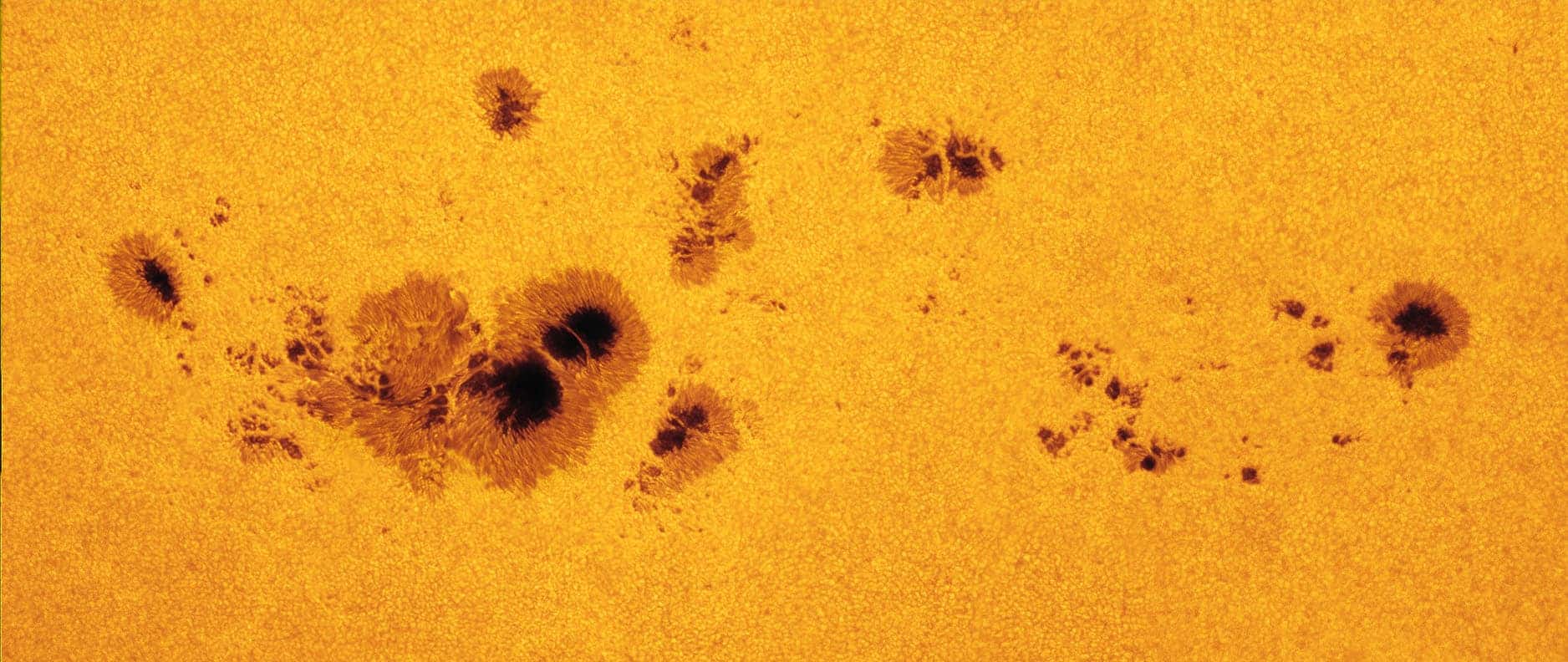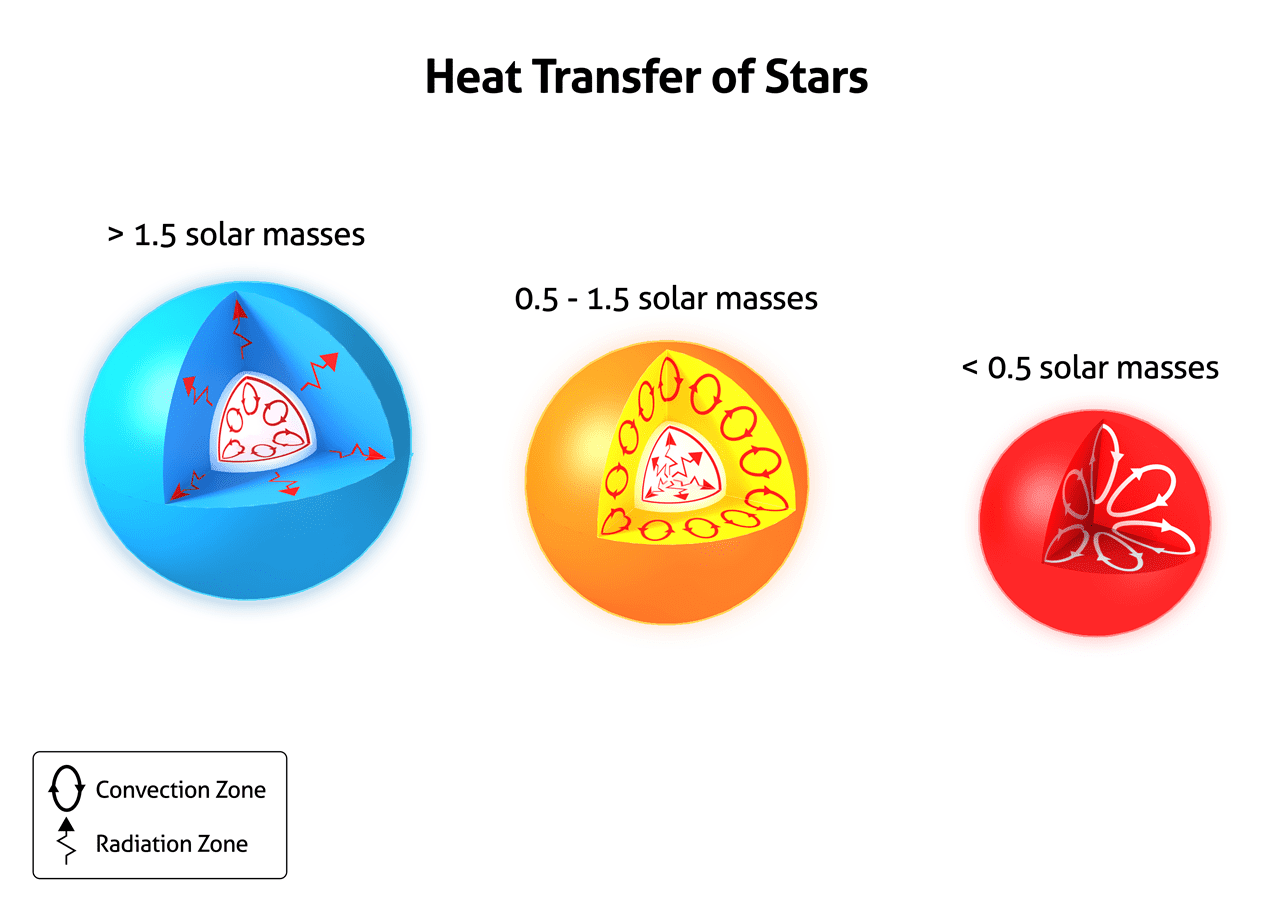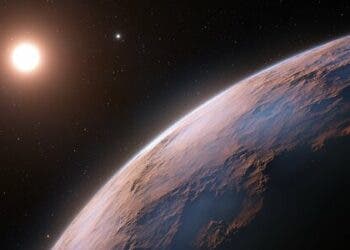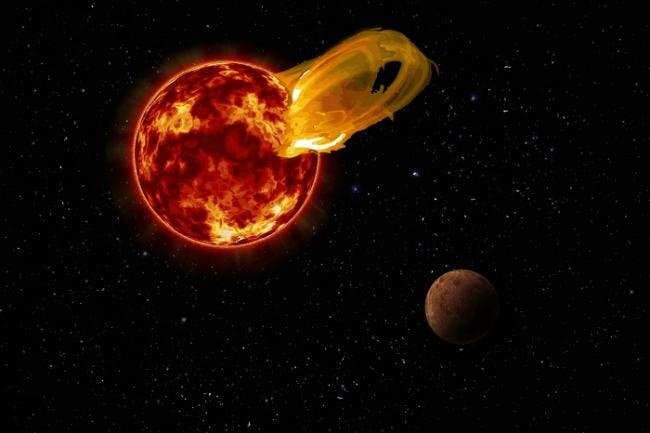Proxima Centauri, the closest star to our solar system, may have a lot in common with the Sun – but we don’t know if this is good news or bad news.

With the sheer multitude of stars and planets in the Milky Way galaxy, you wouldn’t expect to find habitable planets right next door – but this might be the case. In August, astronomers announced that the nearby star Proxima Centauri hosts an Earth-sized planet (called Proxima b) in its habitable zone. We got a bit excited then, but our excitement was short lived. Proxima Centauri is nothing like our Sun.
Proxima is a small, dim, red dwarf, about 1,000 times less luminous than the Sun. That hasn’t changed one bit, but the two stars do share a striking similarity: a sunspot cycle.
You missed a spot
Sunspots are darker spots of reduced temperature which are caused by concentrations of magnetic field flux that inhibit convection. They usually appear in pairs, of opposite magnetic polarity. Our Sun has an 11-year sunspot cycle: at the start of the cycle there almost no spots, and towards the end, an average 100 sunspots cover the star’s surface.
Proxima has a similar 7-year cycle, except it’s much more dramatic. At its peak, almost 20% of the star is covered by spots.
“If intelligent aliens were living on Proxima b, they would have a very dramatic view,” says lead author Brad Wargelin of the Harvard-Smithsonian Center for Astrophysics (CfA).
It was quite surprising to make this discovery because aside from the differences in size, the interior of the two stars is expected to be different.
Convection here, convection there

Inside the Sun, there is a lot of convection going on – but only on the outer areas. There is a lot of matter circulation in the outer third of the Sun (think water inside a boiling pot) but the inner parts are quite still. There’s actually a difference of rotation between two parts, which many astronomers believe is causing the Sun’s magnetic activity.
In contrast, you’d expect convection to happen all through Proxima Centauri so there wouldn’t be any difference in rotation, any magnetic contrast and therefore, any spots.
Sadly, this poses more questions than it answers.
“The existence of a cycle in Proxima Centauri shows that we don’t understand how stars’ magnetic fields are generated as well as we thought we did,” says Smithsonian co-author Jeremy Drake.
Unfortunately, these questions won’t be answered anytime soon.
“Direct observations of Proxima b won’t happen for a long time. Until then, our best bet is to study the star and then plug that information into theories about star-planet interactions,” says co-author Steve Saar.
To make it even worse, we’re not sure how this would affect habitability around Proxima Centauri. There’s a good chance it could have a negative impact because the sunspot cycle could drive solar winds to burn up huge chunks of the planet’s atmosphere (assuming there is an atmosphere in the first place). This would imply that Proxima b is much like the Earth’s moon: in the right place for life to exist, but completely barren and without an atmosphere.




